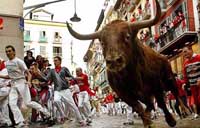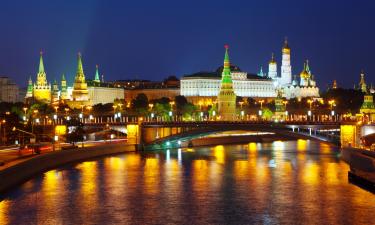Bulls running open Spain most famous festival in Pamplona
The festivities begin at noon (1100 GMT) with the firing of a rocket above the crowd and the immortal words: "Men and women of Pamplona, Long Live San Fermin!" After that it's nine days of drinking, drinking, and more drinking. Oh, and a daily dash down the cobblestone streets ahead of six ѕ -ton bulls.

The first of eight bull runs begin Friday morning, but the party starts Thursday with the traditional "chupinazo." A "chupin" is a small rocket.
From then on, Pamplona is converted into a 24-hour-a-day party town, with ancient streets packed with young and old. Many cavort into the early hours, then go straight from the bars to the famous 825-meter (900-yard) route where the bull runs take place every day at 8 a.m.
Pamplona's population of about 250,000 is expected to rise to more than 1.5 million during the festival, with visitors from the United States, Europe and virtually every other corner of the world pouring in.
The San Fermin festival dates back to the late 16th century, though its roots reach back further, to the era when Spain was first Christianized, the AP reports.
The festival became famous when it was immortalized in Ernest Hemingway's 1926 novel "The Sun Also Rises." A bronze bust of the writer stands proudly outside the bullring where the bull runs end, and Hemingway T-shirts and other knickknacks can be purchased on nearly every street corner.
Not everyone in Pamplona looks forward to the San Fermin festival. Many locals choose this week to leave town, taking advantage of special offers by travel agents to escape the madness of the bull runs. Countless shops choose to close, boarding up windows to protect merchandise from the throngs of partygoers.
Subscribe to Pravda.Ru Telegram channel, Facebook, RSS!




